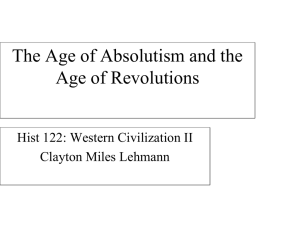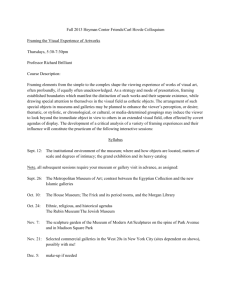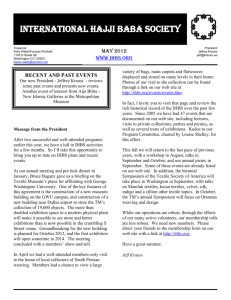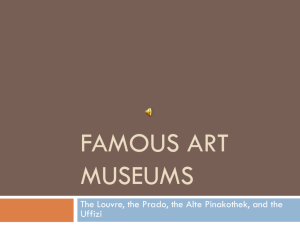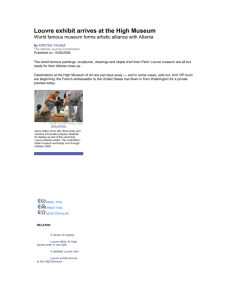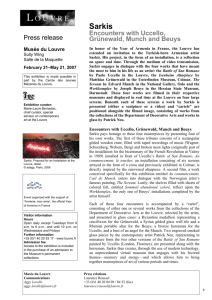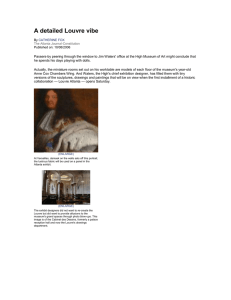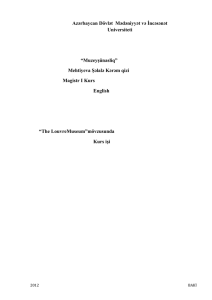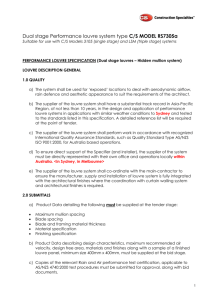MINISTÈRE DES AFFAIRES ÉTRANGÈRES A gigantic gilded wing
advertisement
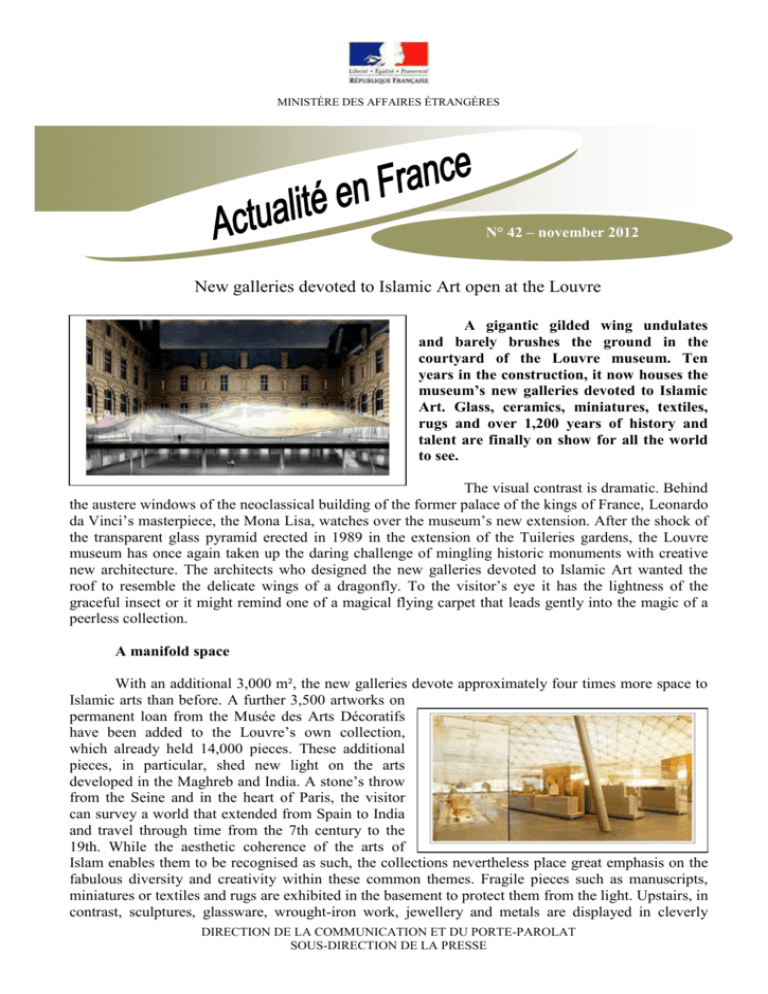
MINISTÈRE DES AFFAIRES ÉTRANGÈRES N° 42 – november 2012 New galleries devoted to Islamic Art open at the Louvre A gigantic gilded wing undulates and barely brushes the ground in the courtyard of the Louvre museum. Ten years in the construction, it now houses the museum’s new galleries devoted to Islamic Art. Glass, ceramics, miniatures, textiles, rugs and over 1,200 years of history and talent are finally on show for all the world to see. The visual contrast is dramatic. Behind the austere windows of the neoclassical building of the former palace of the kings of France, Leonardo da Vinci’s masterpiece, the Mona Lisa, watches over the museum’s new extension. After the shock of the transparent glass pyramid erected in 1989 in the extension of the Tuileries gardens, the Louvre museum has once again taken up the daring challenge of mingling historic monuments with creative new architecture. The architects who designed the new galleries devoted to Islamic Art wanted the roof to resemble the delicate wings of a dragonfly. To the visitor’s eye it has the lightness of the graceful insect or it might remind one of a magical flying carpet that leads gently into the magic of a peerless collection. A manifold space With an additional 3,000 m², the new galleries devote approximately four times more space to Islamic arts than before. A further 3,500 artworks on permanent loan from the Musée des Arts Décoratifs have been added to the Louvre’s own collection, which already held 14,000 pieces. These additional pieces, in particular, shed new light on the arts developed in the Maghreb and India. A stone’s throw from the Seine and in the heart of Paris, the visitor can survey a world that extended from Spain to India and travel through time from the 7th century to the 19th. While the aesthetic coherence of the arts of Islam enables them to be recognised as such, the collections nevertheless place great emphasis on the fabulous diversity and creativity within these common themes. Fragile pieces such as manuscripts, miniatures or textiles and rugs are exhibited in the basement to protect them from the light. Upstairs, in contrast, sculptures, glassware, wrought-iron work, jewellery and metals are displayed in cleverly DIRECTION DE LA COMMUNICATION ET DU PORTE-PAROLAT SOUS-DIRECTION DE LA PRESSE MINISTÈRE DES AFFAIRES ÉTRANGÈRES designed corner cabinets that enable the objects to be observed in every dimension and from different perspectives, providing even more opportunities to marvel at them. Tradition and commitment The project to extend the collection, begun ten years ago, is in keeping with the museum’s tradition. In fact, the first Islamic artworks joined what would become the Louvre museum as far back as the end of the French Revolution. Some of these artworks came directly from the royal collections, such as the baptismal basin of St Louis, a masterpiece of inlaid metal made in Syria in the 14th century, and the series of Ottoman jade dishes that belonged to Louis XIV. Other works came from the Royal Abbey of St Denis, where the kings of France were anointed, such as the remarkable rock crystal ewer fashioned in Egypt in the early 11th century. Other donations from private collections have been added to the museum’s display cabinets over the years, and in 1893 the Louvre opened a department dedicated to Muslim art for the first time. To open its doors to the public this autumn, the project had to rely on significant financial support. Over €98.5 million were released by the French government, and other support has come from generous patrons such as Prince Alwaleed Bin Talal of Saudi Arabia, but also from the French oil company Total, the Sultanate of Oman, Morocco, Kuwait and Azerbaijan. Unusual works of art This site, impressive both for its size and its ambition, has been illuminated by small miracles. Three thousand glazed earthenware Ottoman tiles from the 16th and 17th centuries, relegated to a warehouse for over 30 years, have been rediscovered and reassembled, a precious historical jigsaw puzzle, to be finally put on show to the public. Even more unusual, the entrance door to a Cairo house made from over 300 stones has been reconstructed inside the museum. This masterpiece, a rare testament to the splendour of the Mamluk dynasty, had been taken from Egypt to Paris on the occasion of the 1889 World’s Fair, the same Fair that saw the erection of the Eiffel Tower. Having reached its destination, the doorway remained boxed up in separate pieces. It has had to wait until 2012 to be reborn in the French capital like a Phoenix from its ashes. These myriad artworks come from Andalusia and the Maghreb, but also from Iraq, Syria and Egypt for the Ottoman sphere and from as far away as the heart of the Persian world in Bukhara or Samarkand passing through Afghanistan and the Indian subcontinent. They are a testament to the prolific creativity and skills of artists and craftsmen. Depending on the period, they worked for private commissions or on exceptional projects, but they also took great pains to embellish and work on ordinary, everyday objects and dwellings. DIRECTION DE LA COMMUNICATION ET DU PORTE-PAROLAT SOUS-DIRECTION DE LA PRESSE MINISTÈRE DES AFFAIRES ÉTRANGÈRES A cultural bridge The chosen museography is deliberately based on a chronological rather than a geographical progression, while the name “Islam” is clearly seen as a common denominator not only for a religion but above all for a culture of many countries and influences. The new galleries thus stress the interaction and the link between different peoples steeped in a common tradition, and invite the visitor to cross the bridges between East and West for a greater dialogue of civilisations. A key issue in which the Louvre, the most popular museum in the world and which received over nine million visitors in 2011, is resolutely engaged. Pascale Bernard DIRECTION DE LA COMMUNICATION ET DU PORTE-PAROLAT SOUS-DIRECTION DE LA PRESSE

